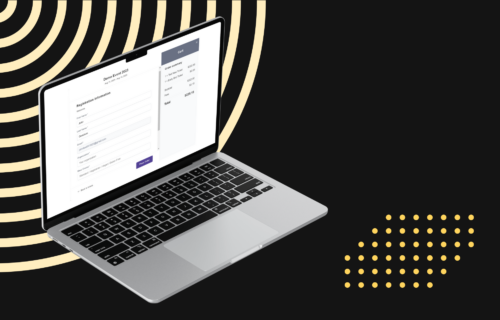Convincing leadership to invest in event management software isn’t always easy, especially when they don’t see the inefficiencies you deal with on a daily basis. But when you can tie those inefficiencies to real numbers like hours saved, fewer no-shows, or higher registration rates, the conversation takes a turn.
That’s what event software is really about: reducing busywork, improving attendee experiences, and giving you the tools to hit your goals faster. This applies to any setting, such as professional development days in K-12 schools, healthcare training, nonprofit events, and beyond. When you present the right data, decision makers start to listen.
Main Takeaways
Table of contents
- Event software reduces the time spent on manual tasks like registration, scheduling, and communication. This gives your team more capacity to focus on strategy, content, and attendee experience.
- You can estimate ROI by calculating hours saved and comparing the value of that time against the cost of the software. This gives decision makers a tangible number to evaluate.
- Tools that support registration fees, promotions, and sponsorship visibility can help you grow revenue. The right software makes it easier to sell more tickets and attract partners.
- Features like personalized agendas and faster check-ins can help you hit your event goals more efficiently. A better attendee experience leads to stronger engagement and better feedback.
- Decision makers care about how new tools fit into existing workflows. Be ready to explain setup time, integrations, and whether support is included.
- Most platforms vary widely in pricing and features. Focus your pitch on tools that solve your team’s biggest challenges without paying for extras you don’t need.
What Are the Tangible Benefits of Event Management Software?
Event software can drastically cut planning time and improve attendee experience by giving you a centralized place to manage various functions:
1. Speed Up Registration and Ticketing
Event software makes it easy for attendees to register, select sessions, view event details, and make payments in one platform.
2. Improve Session Scheduling
Building and updating your event schedule is much easier when everything lives in one hub. You can drag and drop sessions, assign speakers, and make changes in real time, without re-sharing any documents.
3. Enhance Attendee Communications
Built-in tools like email and mobile reminders and push alerts help you keep attendees informed before and during the event. For example, you can send instant push notifications regarding last-minute room assignments or to share a post-event survey.
4. Facilitate Check-In and Feedback Collection
With the right tool, attendees can check in using QR codes or self check-in features, and submit session feedback on the spot.
Other Cost-Saving Benefits
- Fewer Printing and Mailing Expenses: Digital schedules, tickets, and communications mean you can skip the printer entirely. This cuts down on paper waste and helps you stay under budget.
- Reduced Manual Labor for Registration and Scheduling: Automating repetitive tasks saves your team hours of busywork. You’ll spend less time managing logistics and more time focusing on the parts of the event that can’t be delegated.
- Built-In Promotion Tools: Many event platforms, like Sched, come with marketing features like customizable event pages, email blasts, and speaker bios. These help you build buzz and drive sign-ups without having to spend more money on extra tools or resources.
- Better Attendance Tracking for Grant Reporting: If you need to show impact to funders or leadership, session-level attendance data and downloadable reports make it easy to demonstrate how your event performed, and why it’s worth funding again.
How to Justify The Cost of Event Management Software
Now that you have a clear picture of the benefits, the next step is making the case to your company’s leadership team or board of directors.
ROI
While it may be difficult to pinpoint exactly how much money event planning software will save or the revenue it might help generate, you can present estimates to justify your recommendation.
For example, if you estimate that the software will save you 20 hours of work per event, and you hold two events per month, that’s a total of 480 hours saved per year.
20 hrs per event x 2 events per month = 480 hours saved
If you value your time at $40 per hour, that’s a potential savings of $19,200 per year. Divide this by the cost of event planning software and you’ll have your ROI estimate.
You could consider other potential cost savings, such as reduced printing costs or reduced fees for manual registration processes.
Revenue
Another way to justify the cost of event tech is by highlighting the potential for increased revenue by charging registration fees. If you can demonstrate that you could increase attendance and ticket sales with better communication and event promotion, leadership will likely see the rationale for investing in software.
The potential for increased sponsorship or partnership opportunities can also be considered as a result of using the software.
Achieving Event Goals
Be as specific as possible when establishing event goals. It will help you clarify how event planning software can assist with achieving event goals and improving attendee communication and engagement. For example, you can highlight features such as personalized agendas and interactive networking tools as ways to enhance the attendee experience and achieve specific event objectives.
Think about the intangible benefits as well. The improved communication and collaboration capabilities of the software can lead to a more efficient and cohesive team. A faster check-in line, for example, can contribute to increased attendee satisfaction.
Implementation
Decision makers will want to understand what onboarding looks like. They’re going to want to understand the level of set-up and maintenance required. So be ready to explain setup time, team access, and integration with tools you already use. Also highlight if the vendor offers live support, templates, or onboarding help, as these details go a long way in showing the value of the tool.
Do Your Research
Most likely, you will be asked to compare different event software options, so come prepared with detailed comparison reports. Pricing can vary significantly depending on the features and functionality. Many of these software tools are bloated with features that may not be critical to your event, so show leadership that you’re streamlining costs by only paying for the features you need.
Additionally, make sure to anticipate potential objections, be prepared to address them, and trust that you have done sufficient research to answer any questions that may come up.
Try Sched Event Management Software and Prove the ROI for Yourself
Since 2008, Sched has hosted over 25,000 events and more than 10 million event attendees.
Our platform provides online and in-app access to help you deliver an impactful event experience at every level. You can use Sched to manage it all: collect speaker proposals, create custom schedules, manage registrations, send instant updates, track attendance in real time, and more.
Start your free trial today – no credit card needed.
FAQs
How do you calculate the ROI of event management software?
To calculate ROI of event software, start by estimating how many hours your team saves using event software. Multiply those hours by your average hourly wage to find your time savings. Add any cost savings from printing, staffing, or reduced no-shows. Then compare that total to the cost of the software. Example: 20 hours saved x $40/hour x 2 events/month = $19,200 annual savings.
What data should I show leadership to justify the investment on event software?
Decision makers care about clear numbers when thinking about purchasing event software. Make sure to share key metrics like hours saved, reduced manual work, improved attendee satisfaction, higher registration numbers, and better attendance tracking. If you’re applying for funding or grants, show how the software helps with compliance and reporting.
Is event management software worth it for small teams or low-budget events?
Yes. Many small teams use event software specifically because it reduces time spent doing manual work. If you’re running events with limited resources, tools like Sched help you do more with less, without needing a full-time planner or a dedicated team.
How can event management software help with sponsorship or funding?
Professional, data-rich events attract more sponsors. When you use software that tracks engagement, session attendance, and feedback, you can create reports that show ROI to funders or sponsors. This builds trust and supports future funding requests.








